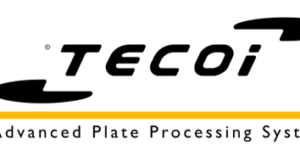NO TURNING BACK:
PIPE WELDING SYSTEM KICKS IT UP A NOTCH
Using the PipeworxTM Welding System from Miller Electric, Shinn Mechanical has increased its pipe fabrication quality and productivity with flatter bead profiles, good sidewall tie-in for 30 percent less grinding, and superior weld puddle control – with no wire rejects in over a year.
Posted: September 28, 2011
On average, the RMD process creates a root pass weld with a 1/8 in to ¼ in throat. In many instances, the amount of root pass metal deposited can support the heat input requirements of a pulsed MIG fill pass. In many applications, Shinn Mechanical eliminates the traditional hot pass altogether, which can save 10 minutes to 15 minutes of time on 12 in diameter Schedule 40 pipe.
EARLY ADOPTER
This shop adopted wire welding applications for pipe welding in the mid-1990s because of Mike Shinn’s drive to incorporate new technology. As a result, Sayers has now welded with all of Miller’s pulsed MIG systems, from the earliest to the most recent.
“I started out welding with the 60M series feeder with an XMTâ 304 as the power source, to a 64M with a Phoenixä 456,” he recalls, referring to the older “M series” wire feeders that contained the controls necessary for pulsed MIG welding. “Later on we moved up to the PipeProä system and now we’re working with PipeWorx, which is really a superior machine for pipe welding compared to everything that has been available in the past. This system runs unbelievably smooth. It is really simple to pick up and learn how to use that machine, and RMD is easy to run.”
Those comments touch on two key features of this system – ease-of-use and arc performance – that have resulted directly from engineers listening to the workflow issues and quality needs of pipe fabricators.
ONE FOR ALL
On any given day, pipefitter/welders will need TIG, stick, flux cored, MIG and pulsed MIG welding capabilities. A traditional pipe shop will equip its welding areas with a TIG/Stick welder and perhaps a multi-process welder, which typically does not have a high frequency (HF) start function.
“With the PipeWorx system, you have the ability to have a high-frequency start, which is huge when you’re doing quality work,” states Sayers. “Now you don’t have a scratch start, which always takes a chance of leaving a tungsten inclusion. This system keeps us from having to buy an additional welding machine just to have the high-frequency capabilities in the start. That is a huge money savings.”
The push-button process change capabilities also provide a significant savings because operators can, in a matter of seconds, switch between:
• DC TIG, with Lift-Arcä starts or high frequency for non-contact arc starts
• Stick, with arc performance optimized for E6010 or E7018 electrodes in pipe applications
• Flux cored
• Conventional MIG
• RMD or Pro-Pulse processes
“Let’s say I just did a Pro-Pulse cap and then wanted to switch back to a TIG start,” says Sayers. “It can take me a minute to grab my torch, my foot pedal, set it up and I’m ready to go within a minute’s time between changeovers. The only reason it takes that long is because my TIG torch and foot pedal are all wrapped up. To change between the TIG setup and the wire setup takes all of two seconds. Just walk right over to the machine, pull the trigger on either one of the guns and I’m right back into the MIG position.”
With all other multi-process welding systems, process changeover takes five to ten minutes. Operators usually need to change the welding lead (TIG torch to stick electrode holder to wire feeder, etc.), as well as swap the work lead because different processes require different polarities. In pipe fabrication shops, MIG, stick and flux cored use reverse polarity (DCEP), where TIG uses straight polarity (DCEN).
Pipefitter/welders typically change processes an average of eight times per day. This adds up to a total of 40 minutes to 80 minutes of changeover time. Using a conservative overhead rate of $60 per hour, changeover costs of old welding systems quickly add up to:
• $40 to $80 per day per operator
• $200 to $400 per week
• $10,000 to $20,000 per year
By eliminating unproductive process changeover time to “all of two seconds,” coupled with faster welding speeds, Shinn Mechanical pipefitter/welders can easily achieve their daily goal of 200 weld inches (i.e., completing 20 joints on 10 in diameter pipe).












